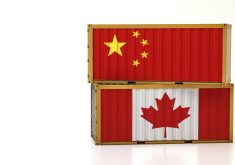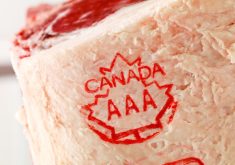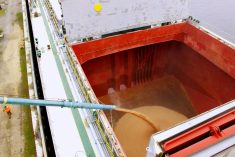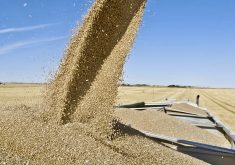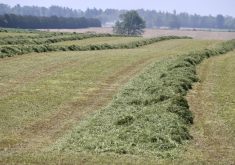China knows how to stick it to Canadian farmers.
The Europeans know how to keep out Canadian farm products, but they do it with more subtlety and grace.
With the United States, who knows what Donald Trump or Joe Biden will do with North American free trade in the next four years?
It’s hard to believe permanently better trade with India is likely any time soon.
The world trade situation seems bleak compared to the happy projections of an ever-expanding world market that were commonplace just three years ago. The collapse of trade optimism is profound.
Read Also

Portrait speaks to Canadian farm life
A painting by George Agnew Reid titled Mortgaging the Homestead hanging in the Ontario Legislature at Queen’s Park stands as a testament to the resilience of farmers.
But it isn’t really so bad. It just seems that way.
In between stories on new and continuing problems, issues and vexations, there are promising signs about the resiliency of our markets.
China is still receiving Canadian canola, even if its buyers have to find some circuitous routes by which to bring it in. Canadian pulse crops find ways to sneak into India.
The U.S.-Canada agricultural trading relationship can seem like an ongoing war if you focus on our disputes — and I’ve covered many of them — but billions of dollars of agricultural trade flows back and forth with almost nobody noticing.
During this pandemic, crops have been pouring out of parts of Canada at a rate we would love to see any year. In the midst of a worldwide crisis, grain is flowing in every direction.
The world has definitely become much more protectionist in the last half-decade, after 25 years of getting ever more liberalized. We’ve covered that topic a lot.
But have things reversed? Has the era of expanding free trade ended, or is the expansion merely slowing? That’s a debate many analysts are now having, and there is unlikely to be any general consensus on that for years.
However, some believe that for agriculture and food, expanding global trade should carry on. A Morgan Stanley paper recently sketched out the company’s expectations for world trade in coming years.
It has a bleak outlook for global trade in a few industries, but not for agriculture. In fact, while industries seen as vital to national security and sovereignty are likely to see themselves forced to live within regional blocs, agriculture and food are seen as areas that will still see continued globalization.
That makes sense. Commodities aren’t the same as other types of products. They are both essential and interchangeable. Farmers have to struggle to be competitive with other farmers in order to profitably make sales to global markets, but by the same token, when one global buyer shuts its doors to us, we can turn around and sell to somebody else. China can’t shut down Canadian canola sales by refusing to accept shipments from Richardson and Viterra. Nor can it prevent Australia selling its barley crop. Those crops will move, at a discount, to other markets. That’s upsetting, but it’s not the end of the business.
That isn’t necessarily so for semiconductors and 5G technology. Especially if the world breaks into competing blocs, as Morgan Stanley expects, many suppliers will no longer be allowed to supply all markets with identical specifications or from a common production base.
Farmers will probably have to change some of their working assumptions in coming years. Financial risks have increased as markets have become insecure. Sudden hits to prices and delivery are likely. Farmers need a stronger safety net to withstand a less-friendly world.
But crops will clear. Meat will move. These products aren’t likely to be permanently cut out of most markets, and the global trading system for agricultural products probably won’t disappear, no matter how balkanized international trade in high-tech and strategic products becomes.
It’s a worse-looking world market than it was. But it’s still a global market and likely to remain so.
This article was originally published at The Western Producer.




